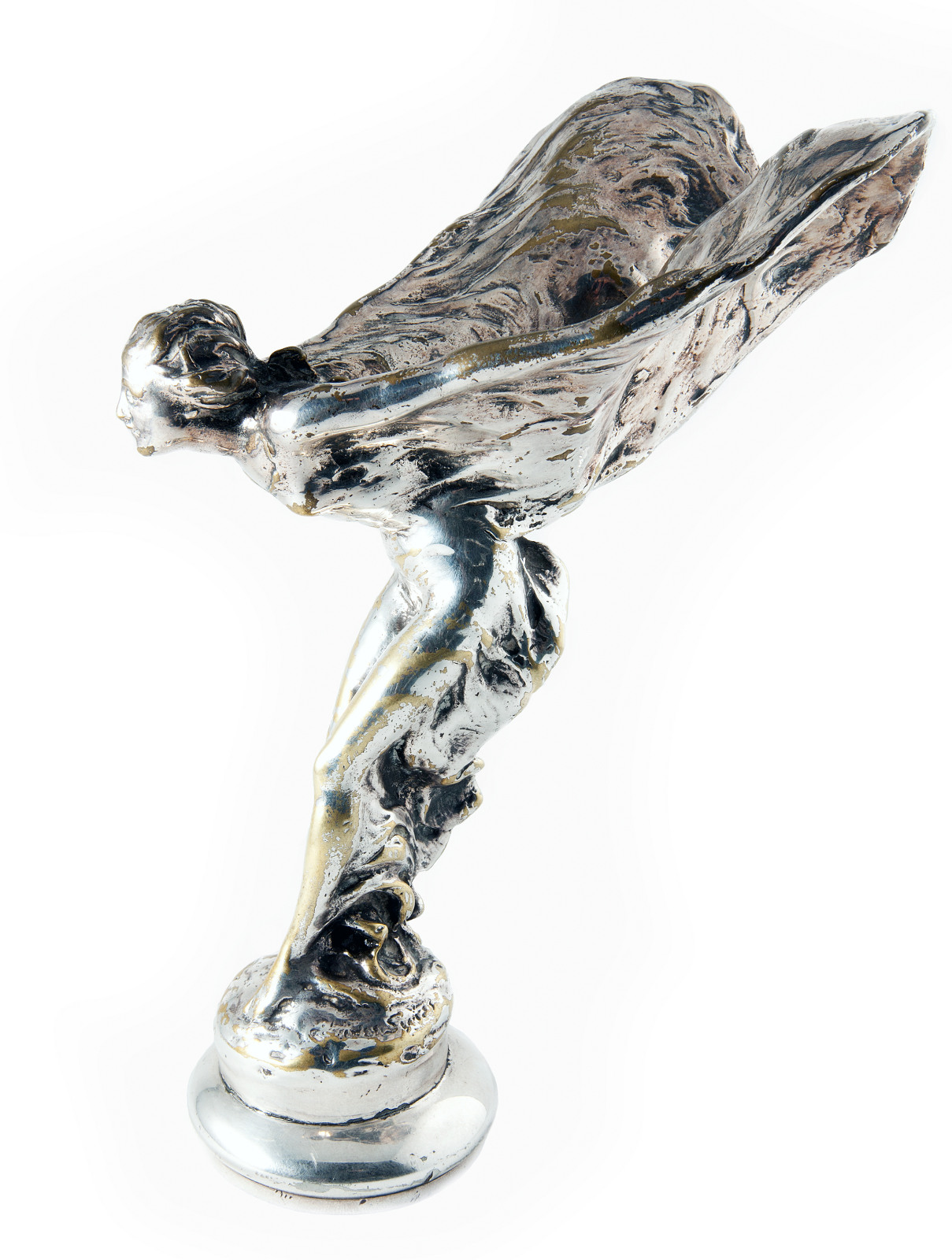The Rich Artistic History of Rolls-Royce Motorcars |
Sykes, a graduate of London's Royal College of Art, originally crafted a figurine of her in fluttering robes, having placed one forefinger against her lips - to symbolize the secret of their love affair. The figurine was consequently named "The Whisper" and is on display at the National Motor Museum in Beaulieu along with other Spirit of Ecstasy figurines. Only three or four castings were ever made, and only two are believed to have survived.
 | |||
| "The Whisper" |
 |
| Angela Bulloch with her 'Cipher of L' installation, the dimensions of which are identical to a Rolls-Royce Phantom. Photo courtesy of http://uk.blouinartinfo.com. |
Berlin-based Angela Bulloch's sculpture of flashing ‘pixel boxes’ lights up the Mayfair showroom of Rolls-Royce for the duration of Frieze London, 2014. This one-off piece has the same dimensions, and a similar level of craftsmanship, as a Rolls-Royce Phantom. Bulloch went to the Rolls-Royce workshop in Goodwood to seek inspiration, and was ‘impressed by the technology and quality of leatherwork and veneers that go into the making of all their cars’. Using LEDS for the first time, she adds: ‘The light programme that runs through my 'Cipher of L' piece uses a range of secret colours usually found on the exterior of Rolls-Royce's cars and the work will have a puzzling pattern that nearly never repeats.' (1)
“The Ideological Antecedents of the Rolls-Royce Radiator” (1962) by Erwin Panofsky discusses the origins of English architectural and artistic styles. He begins the essay referencing the English penchant for gardens, as seen in the so-called “Garden Revolution” of the second decade of the 18th century. This revolution marked the replacement of the Italo-French garden of the preceding era with what the “English Garden.” The English Garden rejected the formal style of gardening, epitomized by the gardens of Le Nôtre Versailles. These gardens "had proudly imposed upon the infinity and irregularity of nature the finiteness and order of a little universe conceived by man—a universe cut out of (and off from) the great outdoors and rationally organized into a geometrical pattern of avenues suitable for the stately progress of horsemen...carefully clipped into stereometrical shapes, “mazes” which pose neat problems in topology, and bodies of water disciplined to the regular contours of basins and canals..." (4)
Panofsky cites Alexander Pope's "Moral Essays" (1731-35), which states: "Treat the Goddess [Nature] like a modest Fair / Nor overdress nor leave her wholly bare." (5)
1. "As Frieze fever takes over London, we preview the best satellite exhibitions around town" O'Kelly, Emma. Wallpaper magazine online edition. October 10, 2014.
http://www.wallpaper.com/art/as-frieze-fever-takes-over-london-we-preview-the-best-satellite-exhibitions-around-town/8083#FsjC6bYVwi3Js8lq.99)
2. "The Beginning," http://www.rolls-roycemotorcars.com/history/
3. "State Master Encyclopedia: The Spirit of Ecstasy," http://www.statemaster.com/encyclopedia/Spirit-of-Ecstasy. Accessed 11 October, 2014.
4. Panofsky, Erwin. “The Ideological Antecedents of the Rolls-Royce Radiator,” Proceedings of the American Philiosophical Society, Vol. 107, No. 4, August 1963. JSTOR.org, Accessed 11 October 2014.
5. Pope, Alexander. "Moral Essays," 1731-35. Ian Gordon. "Moral Essays." The Literary Encyclopedia. 24 Jan. 2002. Accessed 11 October 2014.<http://www.litencyc.com/php/sworks.php?rec=true&UID=3487


